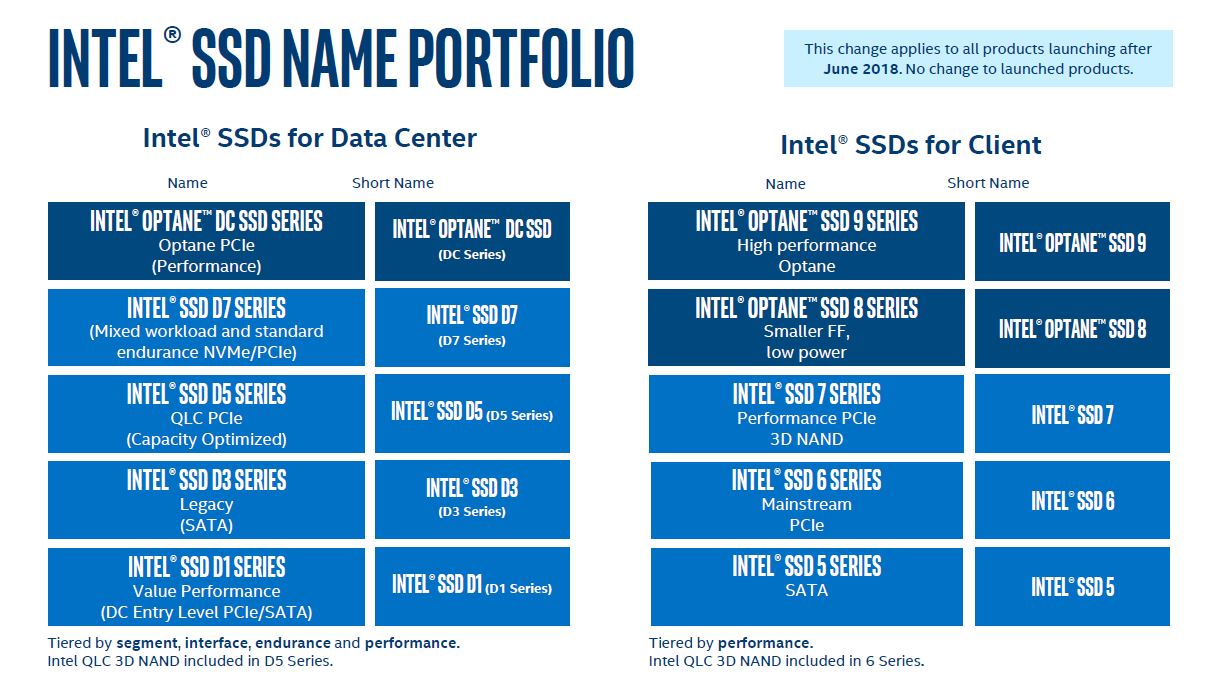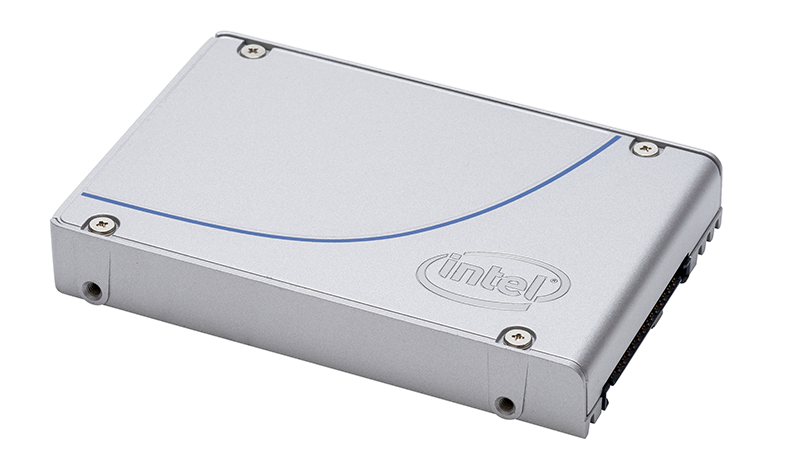If you speak with our editor-in-chief Patrick, he extols the virtues of Intel data center SSDs in the STH hosting cluster and lab, except for a single model (the Intel DC P3320 which was never actually released.) Intel SSDs have been a mainstay of the data center environment since the introduction of the X25-E SSDs which were SLC SATA II 3.0gbps drives. Intel is changing its data center SSD (and consumer SSD) naming conventions going forward.
New Intel Data Center SSD Naming Conventions
Here is the new naming convention slide. As a quick note, the top right box says this only applies to new products launched from June 2018 onwards, so Intel is not retroactively applying this naming convention to the previous generations of SSDs.

The key change is that Intel is moving to a naming convention for SSDs more akin to what it does for server processors, prior to the latest generation Intel Xeon Scalable generation. We previously had a letter plus a family number, e.g. the Intel Xeon E3-1280 V6, which was different than the Intel Xeon E5-2697 V4 or Intel Xeon E7-8894 V4. We now have Optane PCIe retaining the DC series nomenclature.
For NAND SSDs, there a few key levels:
- Intel SSD D7 series – mixed use
- Intel SSD D5 series – capacity optimized
- Intel SSD D3 Series – SATA
- Intel SSD D1 Series – Entry data center SATA/ PCIe
We have been awaiting the death of SATA, but it seems that Intel is still pushing this into the data center. Interestingly enough, the “5” in the consumer series is the SATA form factor. The “D5” in the data center series is the QLC PCIe capacity optimized NVMe drive designation.
Final Words
Overall, this is the decoder ring we will be using for the Intel data center SSD series going forward. We had hoped that Intel would simply change the Pxxxx SSDs (PCIe) to the new naming convention and leave the Sxxxx (SATA) SSDs as they were until they eventually run out of the market.
The writing is on the wall though. SATA SSDs are dying so we expect the Optane, D7, and D5 series to be the most widely used going forward. One will also notice that the notion of the P3700, a high-performance NVMe NAND drive is absent from this hierarchy with Optane taking the performance and endurance workloads. This makes sense form our ZFS ZIL/ SLOG Optane testing.




